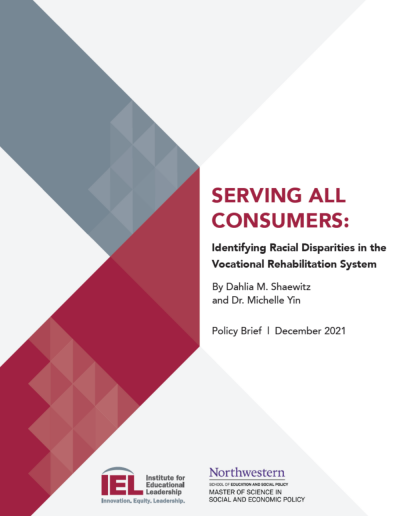
By Dahlia M. Shaewitz and Dr. Michelle Yin
The Vocational Rehabilitation (VR) program is the largest workforce program in the United States, providing employment services to people with disabilities to help them retain or enter competitive integrated employment commensurate with their abilities and capabilities. During the pandemic, state VR services were significantly affected and in some cases those services were halted for a period of time as agencies attempted to reroute services virtually and to eventually provide in-person contact. In addition, the Covid-19 pandemic has led to a recession in the United States that impacts all workers. Historical data in the U.S. show that people with disabilities are more likely than their peers without disabilities to drop out of the workforce during economic downturns and are less likely to recover employment after the recession ends. Further complicating the challenges to recovery are the disparities within the disability community reflected in access to VR services and employment outcomes by race/ethnicity categories. Racial differences in access and use of VR services have been documented since 1938.
Call to Action
Given the historical disparities in employment for people with disabilities and the current economic recovery in the U.S., it is imperative that state VR agencies prepare for and respond to an increased demand for services. People with disabilities who lost employment during the pandemic, those preparing to return to work, those on VR agency wait lists, and people with newly acquired disabilities due to “long Covid” will contribute to this increased demand. The VR system must provide services equitably to all eligible and potentially eligible youth and adults with disabilities. Rethinking and reimagining VR services will require a close examination of the data on racial disparities and a thoughtful approach to close those gaps and ensure equitable services. This will include a reevaluation of VR operations to fundamentally improve equity of services from access through exit.
